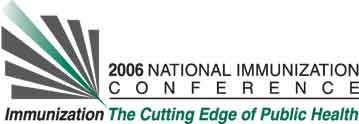Stacey L. Goodall, Scientific Technologies Corporation, 67 E. Weldon, Suite 110, Phoenix, AZ, USA,
Quan Le, Immunization Program, Louisiana Department of Health, 4747 Earhart Blvd, Suite 107, New Orleans, LA, USA, and Ruben Tapia, Immunization Program Director, LA Department of Health and Hospitals, 4747 Earhart Blvd, Suite 107, New Orleans, LA, USA.
Learning Objectives for this Presentation:
By the end of this presentation participants will be able to:
• Identify the benefit of interstate registry access
• Identify the benefit of HL7 data transmission
• Identify immunization-related.issues occurring in a dispersed population
Background:
In August 2005, Hurricane Katrina forced thousands of Louisiana residents from their homes and displaced them across the country. Immediately, public health concerns arose regarding the immunization status of shelter residents. States who were recipients of the shelter residents needed previous immunization history to assess immunization status and avoid over-immunization. Access to immunization data became a focus as relocated children began to enroll in new schools.
Setting:
Schools, provider offices and temporary shelters across the United States.
Population:
Louisiana residents impacted by Hurricane Katrina, displaced to other states.
Project Description:
Because demand for resources within the Louisiana Office of Public Health (OPH) became overwhelming, it was apparent that direct access to the state immunization registry was necessary. OPH decided to allow state and local immunization registry personnel to access LINKS in order to respond to requests from providers, parents and schools in their states. Existing user agreements were used to establish security and confidentiality guidelines.
HL7 communication allowed states to query LINKS directly through their own registries, thereby making LINKS data available to all users of a particular system. Since HL7 messaging capabilities are not available in all states, two methods for accessing data were implemented: direct view only access and HL7 communications.
Results/Lessons Learned:
Within weeks of the hurricane, all 50 state and several local immunization registries were able to access LINKS. As of October 31, 2005, over 35,000 records were successful retrieved across the nation. Use of HL7 communication streamlined the ability to query for data and was the preferred method for patient searches.
Web Page:
https://linksweb.oph.dhh.louisiana.gov/linksweb/main.jsp
See more of Posters
See more of The 40th National Immunization Conference (NIC)

